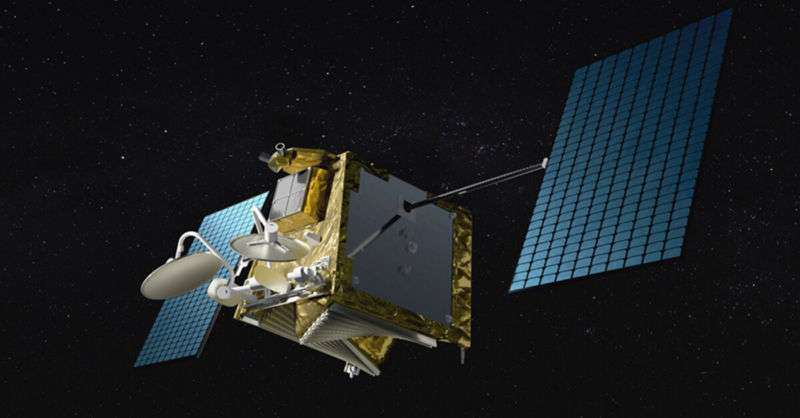
After delays, OneWeb launches its first six low-Earth broadband satellites

OneWeb yesterday launched the first six low-Earth orbit satellites for its planned global broadband network, saying it will provide worldwide broadband access by 2021. The satellites are test units, which OneWeb will evaluate over the next half-year to make sure they work properly.
“If we get six out of six working, that will be amazing,” OneWeb founder Greg Wyler said, according to a Bloomberg article.
The satellites were “aboard a Soyuz launch vehicle from the Guiana Space Center in Kourou, French Guiana,” the company said in an announcement today. The satellites left the rocket in two batches and “[s]ignal acquisition has been confirmed for all six satellites,” the company said.
Yesterday’s launch marks “the transition from successful proof-of-concept to the commercialization of OneWeb,” the company also said. “Launching more than 30 satellites per rocket, OneWeb’s monthly launch program will grow its constellation to more than 650 satellites to allow customer demos in 2020 and provide full global commercial coverage by 2021.” OneWeb has said it may ultimately launch as many as 1,980 satellites.
There’s reason for skepticism of OneWeb’s projected timeline, however. OneWeb originally promised service across Alaska in 2019 but now says it will only offer customer demos starting in 2020.
“OneWeb is about a year behind schedule and watched as Elon Musk’s SpaceX launched a pair of test satellites for a rival space Internet service last year,” Bloomberg wrote. “The startup was also under pressure to have a successful launch before the end of November, when its right to valuable spectrum would have expired.”
Low orbits to allow cable-like latency
Both SpaceX and OneWeb are launching satellites in much lower orbits than traditional satellite broadband networks, potentially allowing for cable-like latencies of about 25ms to 30ms.
In October 2017, Wyler told a US Senate committee that OneWeb would make “low-latency broadband available for every citizen in Alaska” in 2019. Obviously, that won’t happen given OneWeb’s latest projections.
Wyler also said in October 2017 that OneWeb would offer “peak speeds of 500Mbps” in the first iteration of its network, and 2.5Gbps speeds in a “second constellation, planned for 2021.” But now the first version is slated for global coverage in 2021—if OneWeb keeps to its latest public timeline.
OneWeb says its satellites will have operational orbits of about 1,200km and that each satellite will weigh less than 150kg.
OneWeb hasn’t said how much it will charge for broadband but says it intends to “provide affordable access to 4 billion unconnected people around the world” and “provide low-latency, high-speed broadband to even the most remote locations on Earth.”
OneWeb has raised more than $2 billion in funding from Virgin, SoftBank, Qualcomm, Airbus, and others. OneWeb said its business model will be to “provide service indirectly through reseller partners, or directly to the end customer, in the case of airlines or vessel operators, for example.”
SpaceX has US approval to deploy up to 11,943 broadband satellites. FCC rules require the launch of 50 percent of satellites within six years of authorization and all of them within nine years unless a waiver is granted. Musk fired several managers from his satellite project in mid-2018 in order to keep on schedule and provide Internet service in 2020.




